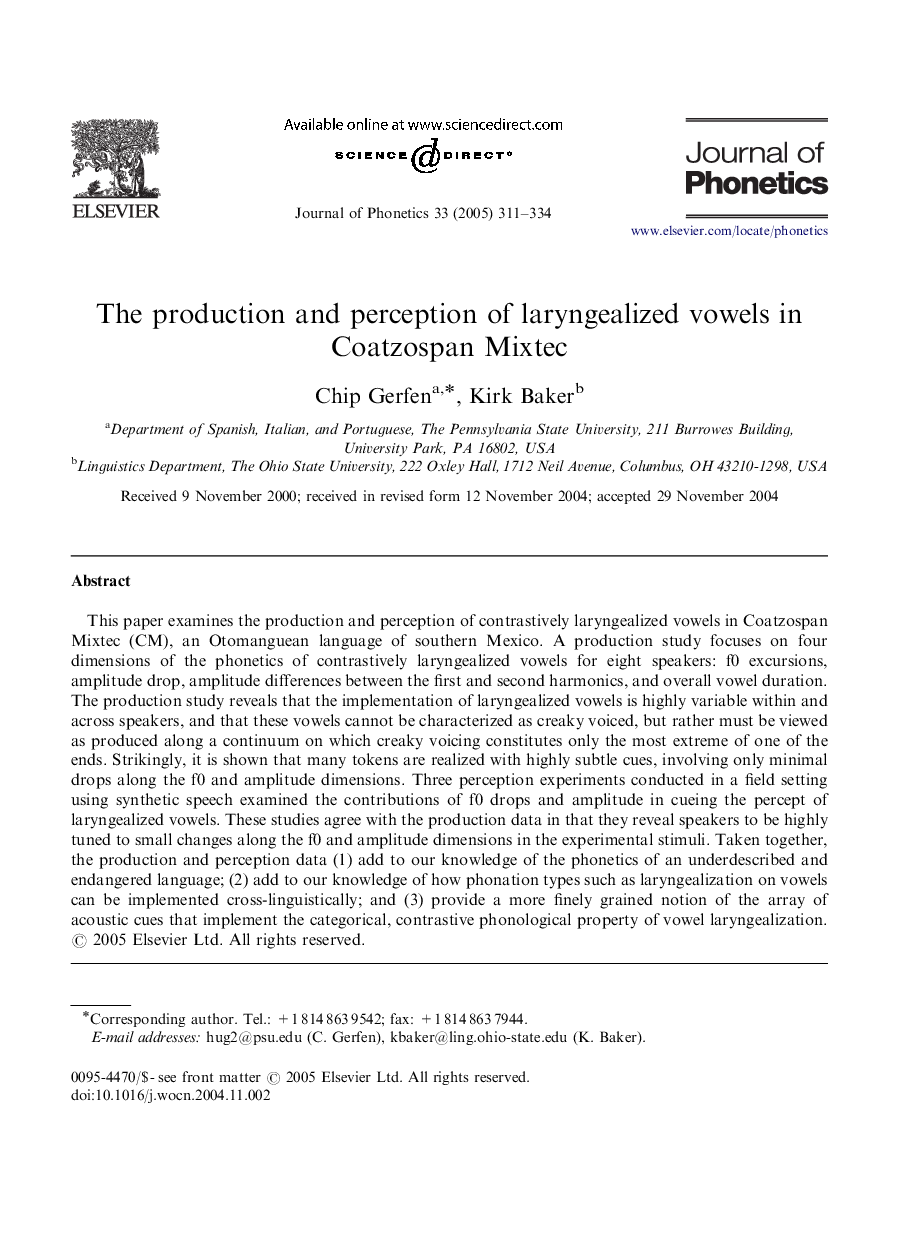| Article ID | Journal | Published Year | Pages | File Type |
|---|---|---|---|---|
| 10519542 | Journal of Phonetics | 2005 | 24 Pages |
Abstract
This paper examines the production and perception of contrastively laryngealized vowels in Coatzospan Mixtec (CM), an Otomanguean language of southern Mexico. A production study focuses on four dimensions of the phonetics of contrastively laryngealized vowels for eight speakers: f0 excursions, amplitude drop, amplitude differences between the first and second harmonics, and overall vowel duration. The production study reveals that the implementation of laryngealized vowels is highly variable within and across speakers, and that these vowels cannot be characterized as creaky voiced, but rather must be viewed as produced along a continuum on which creaky voicing constitutes only the most extreme of one of the ends. Strikingly, it is shown that many tokens are realized with highly subtle cues, involving only minimal drops along the f0 and amplitude dimensions. Three perception experiments conducted in a field setting using synthetic speech examined the contributions of f0 drops and amplitude in cueing the percept of laryngealized vowels. These studies agree with the production data in that they reveal speakers to be highly tuned to small changes along the f0 and amplitude dimensions in the experimental stimuli. Taken together, the production and perception data (1) add to our knowledge of the phonetics of an underdescribed and endangered language; (2) add to our knowledge of how phonation types such as laryngealization on vowels can be implemented cross-linguistically; and (3) provide a more finely grained notion of the array of acoustic cues that implement the categorical, contrastive phonological property of vowel laryngealization.
Related Topics
Social Sciences and Humanities
Arts and Humanities
Language and Linguistics
Authors
Chip Gerfen, Kirk Baker,
